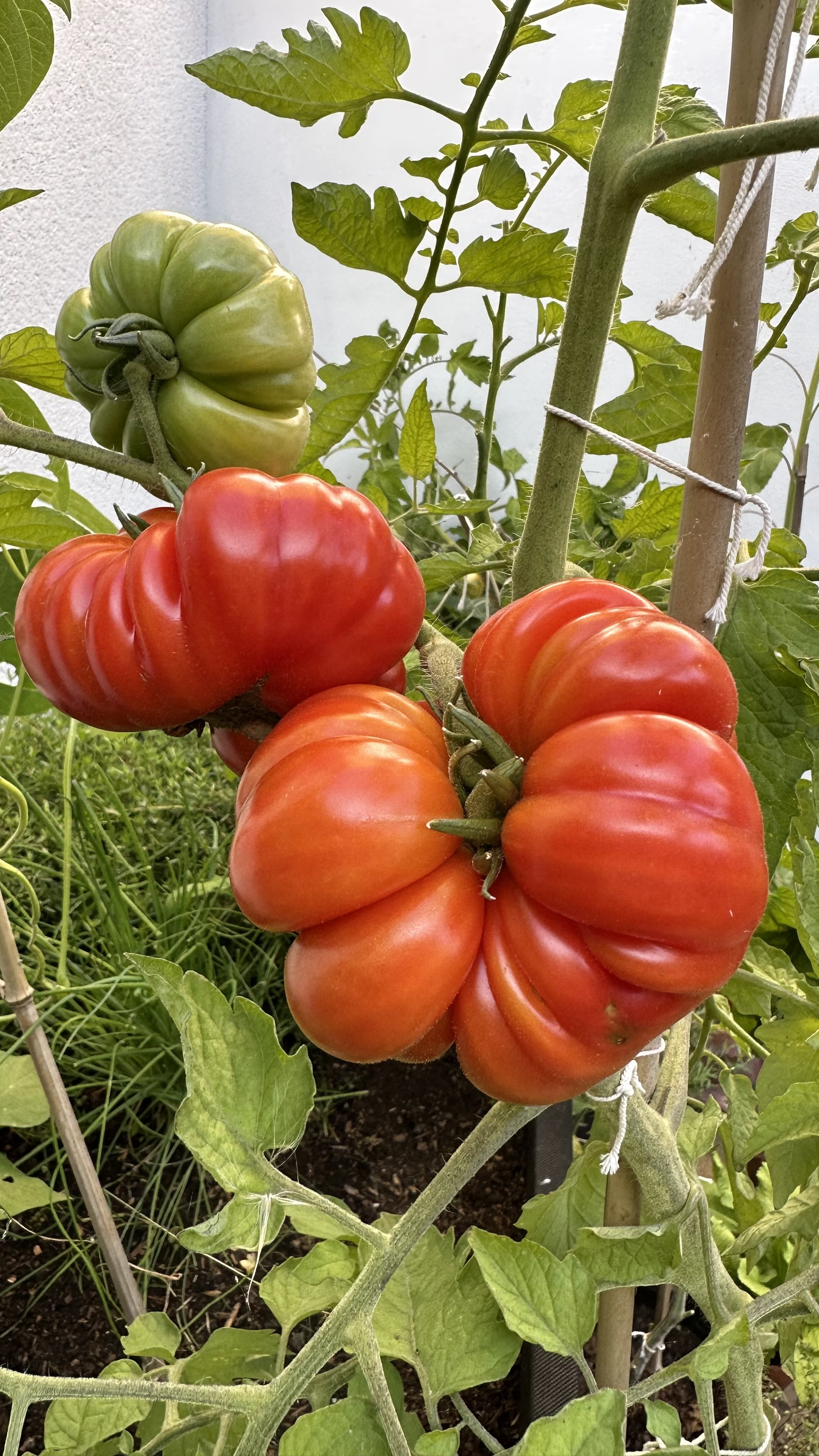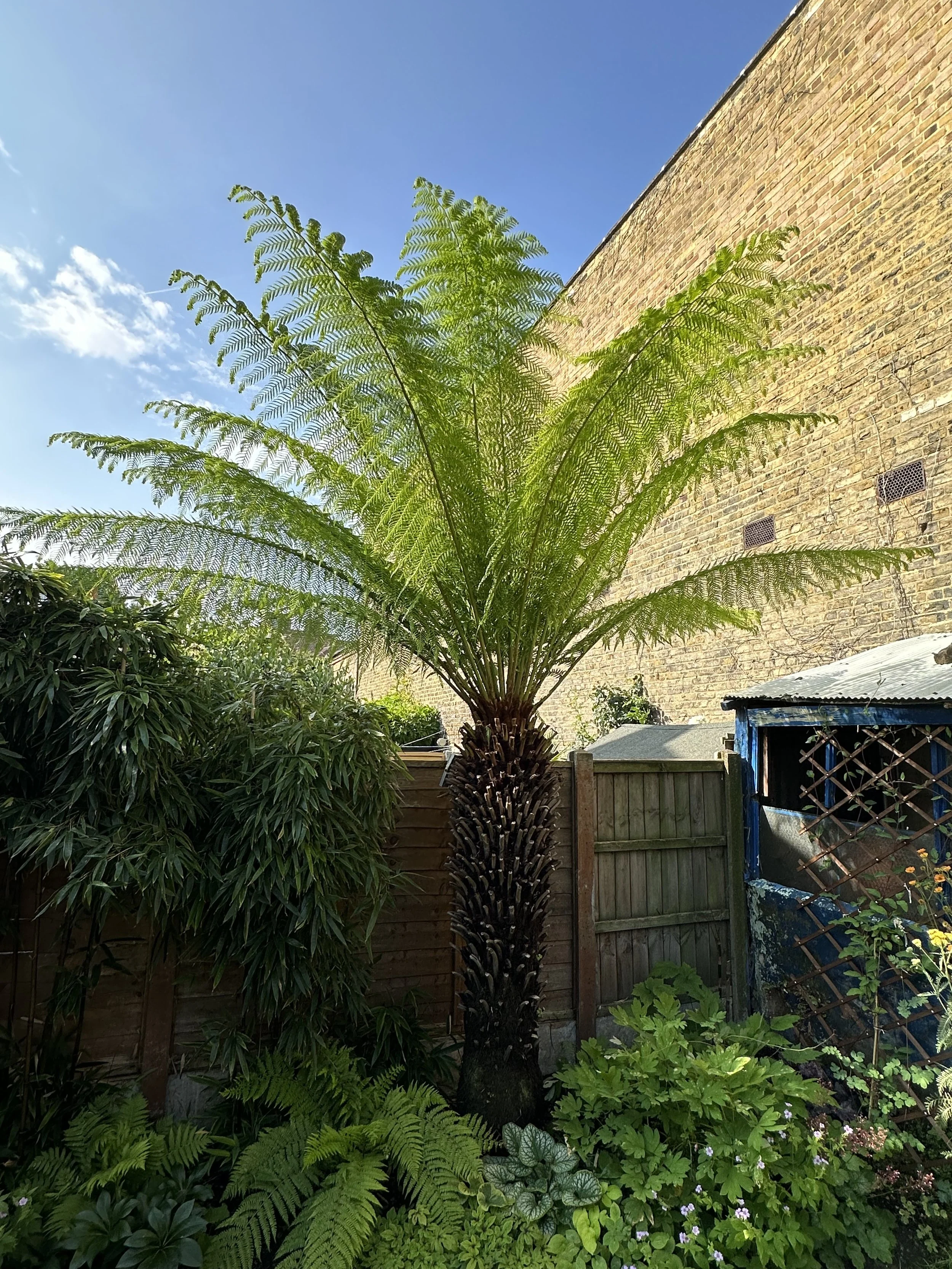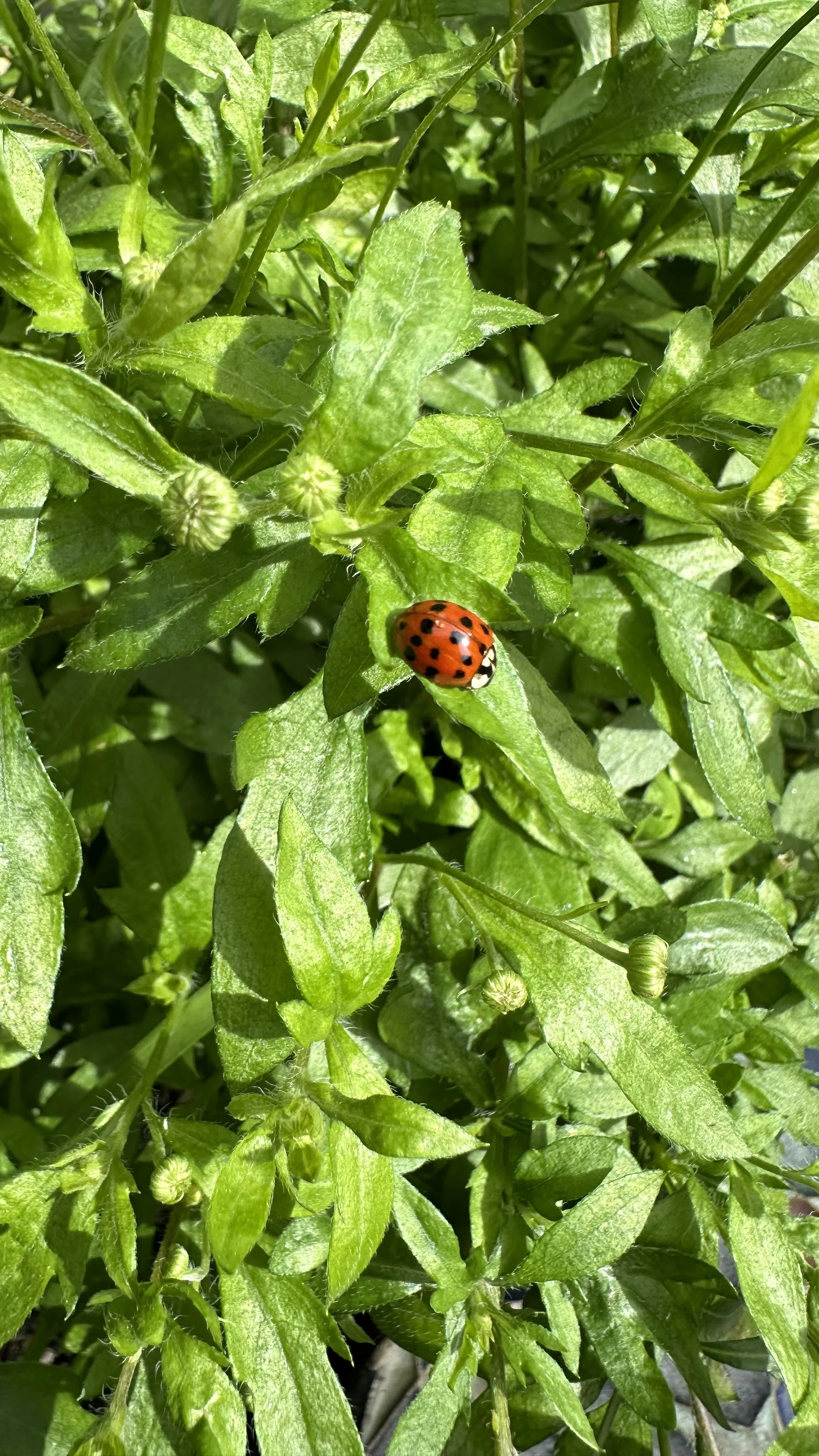The Best Companion Plants for Tomatoes
This website is reader-supported - thank you! This post may contain affiliate links. As an Amazon Associate, I earn from qualifying purchases at no extra cost to you.
Exploring the concept of companion plants for tomatoes opens up a new perspective on how to enhance your garden’s productivity.
Tomatoes, one of my favorite things to grow, benefit significantly from being paired with the right allies.
These companions do more than fill space; they play a critical role in attracting beneficial insects and pollinators, creating a garden environment that's both more resilient and more bountiful.
Understanding the relationships between tomato companion plants and the natural world allows for a smarter approach to gardening.
By choosing plants that naturally deter pests while inviting beneficial pollinators, you can ensure that your tomato plants will have the best possible conditions to thrive.
In this guide, we'll explore how to select the perfect companions for your tomatoes, aiming to create a harmonious garden that yields the best results.
Whether you're looking to improve harvest, minimize pest issues, or simply enjoy a healthier garden ecosystem, the right companion plants for tomatoes can make all the difference.
Learn more about growing tomatoes with my guides:
Quick Homemade Tomato Fertilizer
The Best Companions for Your Tomatoes
When I started my journey into gardening, I quickly learned that tomatoes are pretty sociable in the plant world.
They thrive when surrounded by certain plants, which can help them grow healthier and more vigorous.
Here's a closer look at some of the best companion plants for tomatoes and the benefits they bring:
1. Basil:
Pollinator Attraction:
Basil flowers attract pollinators like bees and other beneficial pollinators to your garden.
Increased pollinator activity can lead to higher tomato yields, as the flowers of tomato plants are pollinated by bees and other insects.
This symbiotic relationship ensures that both your basil and tomatoes flourish.
Growing Tips:
To maximize the benefits of planting basil with your tomatoes, ensure there's enough space between your tomato plants to tuck in several basil plants.
This allows for ample air circulation, reducing the risk of fungal diseases while still reaping the benefits.
Basil prefers the same warm conditions as tomatoes, making them ideal growing partners.
Keep the soil consistently moist and provide plenty of sunlight for the best results.
Learn more about growing basil with my guide How to Propagate Basil Like a Pro.
Here are the basil seeds I recommend:
Learn more about growing tomatoes with my guides:
The Art of Harvesting Tomatoes
2. Marigolds:
Nematode Control:
One of the most significant benefits of marigolds, especially for tomatoes, is their ability to suppress nematodes in the soil.
Nematodes are microscopic worms that attack the roots of plants, weakening and potentially killing them.
Certain varieties of marigolds, particularly the French marigold (Tagetes patula), exude a substance from their roots that is toxic to nematodes.
For the best nematode control, it's recommended to plant marigolds in the area at least a season before planting tomatoes to allow time for this effect to take place.
Planting Tips:
When planting marigolds as companions for tomatoes, consider spacing them throughout the garden for broad coverage against pests.
Both the tomatoes and marigolds benefit from full sun and well-drained soil, making them compatible garden mates.
Remember, though, to choose marigold varieties known for their pest-deterrent properties, as not all marigolds offer the same level of protection.
To learn more about growing marigolds, check out my guide How to Pair Marigold Companion Plants.
Here are the marigold seeds I recommend:
Learn more about growing tomatoes with my guides:
Why is My Tomato Plant Not Flowering?
Growing Tomatoes in Shade: Top 6 Varieties
3. Bush Beans:
Nitrogen Fixation:
One of the primary reasons bush beans are such great companions for tomatoes is their ability to fix nitrogen in the soil.
Beans, as part of the legume family, have a symbiotic relationship with rhizobia bacteria in the soil, which enables them to convert atmospheric nitrogen into a form that plants can absorb.
This natural process enriches the soil with nitrogen, a vital nutrient for the heavy-feeding tomato plants, promoting healthier growth and more robust yields.
Planting Tips:
While bush beans offer numerous benefits as tomato companions, it's essential to manage their planting and harvesting times to avoid competition for nutrients and space.
Staggering the planting of beans and tomatoes or using a rotational planting strategy can ensure that both plants have access to the resources they need to thrive.
To learn more about growing beans, check out my guide Easy Steps to Growing Green Beans in Containers.
Here are the bean seeds I recommend:
To learn more about companion planting, check out my guides:
4. Garlic:
Pest Repellent:
Garlic's strong scent is its primary weapon against pests.
This aroma acts as a natural deterrent for various insects that might otherwise find tomato plants an attractive target.
Specifically, garlic is known to repel spider mites, a common tomato pest that can cause significant damage if left unchecked.
The presence of garlic can help keep these and other pests, such as aphids and beetles, at bay.
Planting Tips:
When incorporating garlic into your tomato garden, consider planting garlic cloves in the fall for a spring harvest, or in the spring if you're in a warmer climate.
Positioning garlic around the perimeter of your tomato plants or in adjacent rows can maximize its protective benefits while minimizing any competition for nutrients.
This strategic placement ensures that both garlic and tomatoes can coexist and mutually benefit from each other's presence.
To learn more about growing garlic, check out my guide Spring Garlic Planting: From Clove to Harvest.
Here is the garlic I recommend growing:
5. Carrots:
Nutrient Sharing:
Carrots and tomatoes complement each other well in terms of nutrient uptake.
Carrots are light feeders, meaning they don't deplete the soil of significant amounts of nutrients.
Tomatoes, on the other hand, are heavy feeders, especially requiring more phosphorus and potassium.
The modest nutritional demands of carrots mean they're not competing aggressively with tomatoes for these vital resources, allowing both to coexist harmoniously.
Planting Tips:
When planting carrots with tomatoes, consider the timing and spacing to ensure both have adequate space and resources to grow.
Planting carrots around the base of tomatoes can maximize garden space without overcrowding.
As carrots are pulled up, they can leave behind loosened soil, which benefits the growing tomato plants by providing more room for root expansion.
To learn more about growing carrots, check out my guide When to Pick Carrots: The Comprehensive Guide.
Here are the carrot seeds I recommend growing:
6. Nasturtiums:
Trap Cropping:
Beyond merely repelling pests, nasturtiums can act as a trap crop.
This means they attract pests to themselves, away from your valuable tomatoes.
Aphids, in particular, are drawn to nasturtiums, which can be strategically used to lure them away from tomato plants, minimizing damage and stress on your tomatoes.
Companion Planting Tips:
When planting nasturtiums with tomatoes, consider using them as border plants or planting them in between tomato rows.
This placement ensures that nasturtiums can effectively perform their roles in pest management and attracting beneficial insects without competing with tomatoes for nutrients.
To learn more about growing nasturtiums, check out my guide Utilizing Nasturtium Companion Plants for Natural Pest Control.
Here are the nasturtiums I recommend growing:
Learn more about starting a vegetable garden with my guide:
What Not to Plant with Tomatoes
While tomatoes are quite friendly and benefit from a range of companion plants, there are a few plants that they just don't get along with.
It's not personal—well, actually, in a botanical sense, it kind of is.
Let's talk about those plants that should keep a polite distance from your tomato plants and why.
1. Potatoes:
Both tomatoes and potatoes belong to the Solanaceae family, which makes them susceptible to the same diseases, particularly blight.
Planting them too close can facilitate the spread of these diseases, affecting both crops adversely.
It's a family feud best avoided by keeping them in separate areas of your garden.
To learn more about growing potatoes, check out my guide The Best Potatoes to Grow in Bags.
To learn more about companion planting, check out my guides:
Companion Planting with Peas: Maximizing Your Garden's Potential
2. Brassicas (Cabbage, Broccoli, Cauliflower, etc.):
These members of the Brassicaceae family are quite the resource hogs when it comes to nutrients.
They can deplete the soil of essential nutrients that tomatoes need to thrive, leading to undernourished, unhappy tomato plants.
Moreover, the dense foliage of brassicas can overshadow your tomatoes, limiting their sunlight exposure.
Check out my guides on growing Cabbage, Broccoli, and Cauliflower.
3. Corn:
At first glance, tomatoes and corn might seem like good garden buddies, but they share a common enemy that makes this pairing problematic—corn earworms, which are also known as tomato fruitworms in their larval stage.
Planting corn near tomatoes invites these pests to a feast, putting both crops at risk.
To learn more about growing corn, check out my guide Growing Corn in Containers Made Easy.
4. Fennel:
Fennel is not a team player in the garden.
It exudes a chemical from its roots that can inhibit the growth of tomatoes and other plants.
Additionally, fennel tends to attract certain types of insects that are not beneficial to tomatoes.
It's best to give fennel its own secluded spot away from most vegetable crops.
To learn more about growing fennel, check out my guide A Guide to Companion Planting with Fennel.
5. Cucumbers:
While cucumbers are not as harmful to tomatoes as the others listed, they can still present problems due to their sprawling growth.
They can overcrowd tomato plants and compete for water and nutrients.
Additionally, cucumbers can attract some pests that also enjoy snacking on tomatoes.
While not the worst companion, careful consideration and spacing should be given if you plan to plant them nearby.
To learn more about growing cucumbers, check out my guide A Guide to Growing Perfect Greenhouse Cucumbers.
For more companion planting tips, check out my guides:
Thriving Together: The Best Companion Plants for Swiss Chard
Why Companion Planting Matters
When I first dipped my toes into the world of gardening, the concept of companion planting was a revelation to me.
It was like discovering a secret society in the garden where plants communicate, support, and even protect each other.
Let me break down why companion planting is not just beneficial but essential for a thriving garden.
1. Natural Pest Control:
One of the most compelling reasons to practice companion planting is its role in managing pests naturally.
By carefully selecting plants that repel specific pests, you can significantly reduce the need for chemical pesticides.
For example, marigolds can deter nematodes and basil can keep away thrips and flies from tomato plants.
This not only helps keep your tomatoes healthier but also supports a more eco-friendly garden.
2. Attraction of Beneficial Insects:
Just as some plants repel pests, others can attract beneficial insects.
These insects, such as bees, butterflies, and parasitic wasps, play a critical role in pollination and controlling pest populations.
Planting flowers like nasturtiums and herbs like basil around your tomatoes can create a buzz of activity, leading to better pollination and natural pest control.
3. Soil Health and Nutrition:
Companion planting can also enhance soil health and nutrient availability.
Certain plants, like bush beans, can fix nitrogen in the soil, which is a crucial nutrient for tomatoes.
This symbiotic relationship means that your tomatoes can benefit from naturally richer soil without needing to rely heavily on fertilizers.
For more companion planting inspiration, check out my guides:
4. Improved Plant Growth and Flavor:
There's anecdotal evidence to suggest that certain plant combinations can enhance each other's growth and even taste.
Basil is often said to improve the flavor of tomatoes when planted nearby.
While the science behind this is still up for debate, many gardeners swear by these combinations.
5. Maximizing Garden Space:
For those of us with limited gardening space, companion planting offers a way to get the most out of every square inch.
By combining plants with different heights, root systems, and growth rates, you can create a densely planted, productive garden.
This not only maximizes your yield but can also reduce weed growth due to the reduced space for weeds to establish.
6. Creating a Diverse Ecosystem:
At its heart, companion planting is about biodiversity.
Introducing a variety of plants into your garden can create a more resilient ecosystem.
This diversity can reduce the spread of diseases and pests while promoting a healthier, more balanced garden environment.
For more tomato growing tips, check out my guide:
Quick FAQs
What should I not plant with tomatoes?
Avoid planting tomatoes near potatoes, brassicas (like broccoli, cabbage, and cauliflower), and fennel.
These plants can either attract the same diseases, compete aggressively for nutrients, or in the case of fennel, inhibit tomato growth through chemical interference.
Additionally, keep tomatoes away from walnut trees due to the juglone they produce, which is harmful to tomato plants.
What are the best plants to grow with tomatoes in containers?
In containers, tomatoes do well with companions like basil, which can enhance flavor and repel pests, and marigolds, which deter soil nematodes.
Other great companions for container-grown tomatoes include lettuce, which thrives in the shade provided by tomato plants, and chives or garlic, to repel aphids and spider mites.
These companions help optimize the limited space in containers while promoting a healthy growing environment.
To learn more about growing tomatoes in containers, check out my guide: Grow Tomatoes Anywhere with Grow Bags.
How do companion plants protect tomatoes from pests?
Companion plants can offer natural pest protection in several ways.
Some, like marigolds, emit substances that deter soil pests, while others, such as basil and garlic, produce strong scents that repel airborne pests.
Plants like nasturtiums serve as trap crops, attracting pests away from tomatoes.
Additionally, companion planting can encourage the presence of beneficial insects, like ladybugs and parasitic wasps, which prey on common pests.
Can companion planting help in raised beds?
Absolutely.
Companion planting in raised beds can be particularly effective due to the controlled environment.
Raised beds allow for precise spacing and soil management, making it easier to implement companion planting strategies.
By selecting the right companions, you can enhance soil fertility, improve pollination, and reduce pests, leading to healthier tomato plants and a more productive harvest.
For more creative companion planting ideas, check out my guides:
Wrap-Up
As we reflect on the journey of growing tomatoes in our vegetable gardens, it becomes clear that the strategic choice of companion plants can profoundly influence the health, productivity, and beauty of our tomato patches.
By embracing plants that serve as living mulch and ground cover, we not only conserve soil moisture and improve soil health but also create a more vibrant and resilient garden ecosystem.
Companion plants like nasturtiums and marigolds offer a dual benefit: they deter pests such as flea beetles and tomato hornworms while attracting pollinators, ensuring our tomato plants receive the attention they need for optimal fruit set.
The role of companions extends beneath the soil surface, where the choice of allies like carrots can significantly benefit tomato roots, enhancing growth and stability.
In our quest to avoid growing tomatoes near plants that could potentially harm them, we discover the importance of mindful garden planning.
This includes acknowledging which plants to keep at a distance to prevent issues such as competition for nutrients or attraction of shared pests.
The inclusion of beneficial companions, on the other hand, promotes a balance, encouraging a thriving community of plants and insects that support each other.
The beauty of growing tomatoes becomes even more rewarding when we see our plants supported by a diverse array of companions, each contributing to a garden teeming with life, beauty, and abundance.
In conclusion, the practice of companion planting with tomatoes offers a holistic approach to gardening that emphasizes balance and biodiversity.
It's a testament to the power of working with nature to create a flourishing vegetable garden where tomatoes and their companions thrive together.
Pin this post to save it for later!









































